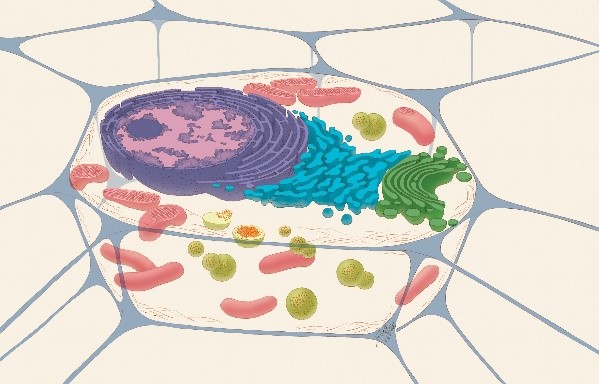
A cross-section of a cell showing organelles. Credit: Judith Stoffer.
Welcome to our tour of the cell! Imagine you’ve shrunk down to about 3 millionths of your normal size. You are now about 0.5 micrometers tall (a micrometer is 1/1,000th of a millimeter). At this scale, a medium-sized human cell looks as long, high, and wide as a football field. But you can’t see nearly that far. Clogging your view is a rich stew of molecules, fibers, and various cell structures called organelles. Like the internal organs in your body, organelles in the cell each have a unique biological role to play.
The Nucleus and Its Closest Neighbor
Our first stop is the somewhat spherical structure about 50 feet in diameter. It’s the nucleus—basically the cell’s brain. The nucleus is the most prominent organelle and can occupy up to 10 percent of the space inside a cell. It contains the equivalent of the cell’s genetic material, or DNA.


 A cross-section of a cell showing organelles. Credit: Judith Stoffer.
A cross-section of a cell showing organelles. Credit: Judith Stoffer.